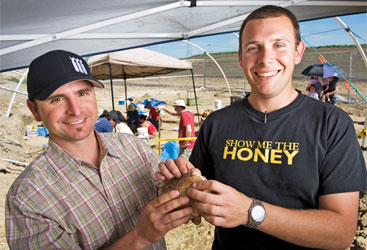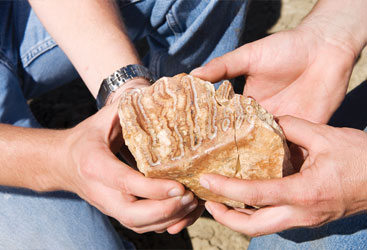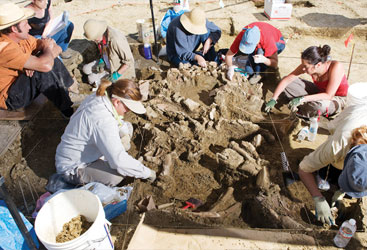It looks like you're using an Ad Blocker.
Please white-list or disable AboveTopSecret.com in your ad-blocking tool.
Thank you.
Some features of ATS will be disabled while you continue to use an ad-blocker.
Farmer finds red haired columbian mammoth and other fossils in artichoke field, ancient kill site?
page: 112
share:
I just found this on westerndigs.org
I took the obligatory ATS leap and and read more into somethimg than that was written.
I am going out on a limb and say they found a midden.
I will lay out my reasoning later.
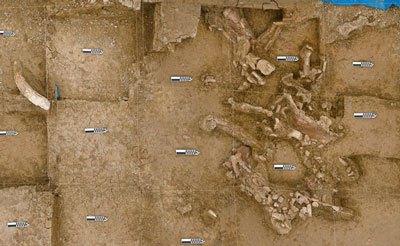
To bad they couldn't get any DNA from the hair.
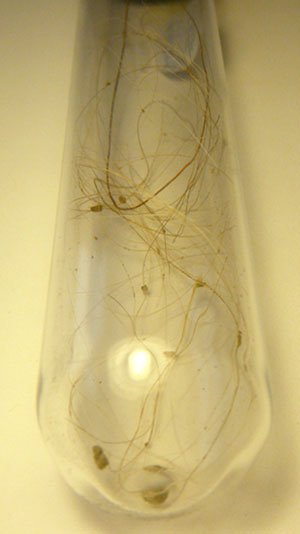
westerndigs.org...
The large diversity of the faunal remains combined with the extreme disarticulation, and the sea shells, several miles from the then coast, point to a human midden.
The two most telling pieces of evidence are the 27k year old sea shells, and the freshwater mussels.
A) because the location was several miles from the shoreline at the time and
B) because freshwater mussels figure heavily in the 60k year old midden at Witt, only about 80 miles away and along a natural movment corridor.
There are three passes from the san Joaquin valley to the coast, south of us 152, and north of us 41. Los Gatos creek is the southern most, and the most direct route through these most inhospitable mountains. Los Gatos creek cuts all the way to the san Benito river headwaters west of coalinga ca. It would be an easy walk up the san Benito valley, north till it meets the pajaro river which is just north of the site in question.
And the other two passes would be more difficult due to a lack of water, the western san Joaquin valley is one of the driest places on earth, and they would take you to the same san Benito drainage.
Sorry , I wandered a little, I've been over a lot of that territory, and I picture how the terrain would have constrained the movements of early peoples.
So, back go the question at hand,
Did humans leave this pile of refuse from at least 27,000 years ago?
You have a large array of terrestrial mammals, found in one place. They have been disarticulated and bones smashed, just as is found at the Witt site, which is only 80 miles or a several days walk. Both freshwater and salt water shellfish found at the site, even though it's several miles to the then coast, fresh water mussels formed the basis for the midden at Witt.
What is missing is tools, maybe. The oldest layers at Witt, had bone points, and stone points show up later, and there is a history of ancient people in California, who used only the crudest stone tools, just broken rocks. If one is not looking for something so primitive one might not recognize it.
I took the obligatory ATS leap and and read more into somethimg than that was written.
I am going out on a limb and say they found a midden.
I will lay out my reasoning later.
Artichoke farmers plowing their fields in northern California have reaped a strange harvest: a trove of exotic animal fossils, including camel, mastodon and — most striking of all — the first known remains of a Columbian mammoth with strands of its hair still intact.
Since the dense deposit of Ice Age bones was first unearthed in 2011, near Castroville in Monterey County, archaeologists and paleontologists have been working to tease data out of the remains, and also piece together how so many animals could end up in the same ancient grave.
“We have bison, we have camel, we have horse, we have mastodon — that’s a pretty diverse range of animals for that one spot,” said Mark Hylkema, an archaeologist with California State Parks who’s coordinating the all-volunteer effort to study the site.
“So it begs the question: How did so many bone elements get deposited at this place?”

The deposit of fossils is so dense that the team only stopped excavating because of constraints of time and staffing, he said. Many more bones remain in the ground.
“It was like a box of Kleenex, where you pull out a sheet and another one’s right behind it,” he said. “At some point, you just have to say, that’s it, we gotta stop.”
But the site was not some kind of mud pit or natural trap that could have swallowed up the animals, he added.
The bones are scattered, jumbled, and broken into pieces — almost as if having been processed and then cast aside.
“It’s not like the La Brea tar pits, where they all fell in and just became nicely preserved,” he said. “Our guy looks like he stepped on a paleolithic land mine. It’s all pieces.
The team did find a layer of seashells underneath the mammoth, which were successfully dated to 27,000 years ago. But that date, paired with the extinction of the Columbian mammoth some 10,000 years ago, leaves a rather large window.
So now the team is turning to other clues, like testing traces of freshwater molluscs found among the animals, which can help secure a date, and scrutinizing the bones for cut marks or other signs of butchering by humans.
And then there’s the sheer variety of animals found — not only mammoth and mastodon, which were known to have been hunted by humans, but also bison, camel and birds of prey.
“If you were to dig randomly in a landscape, even in an archaeological site, you’d rarely find that kind of diversity — unless you’re in a village refuse site or something like that,” he said.
But Hylkema and his team are a long way from claiming that the artichoke farmers unearthed a midden left by Ice Age hunters.
“We all know that Paleoindian finds can be pretty controversial, so you want to have a solid case when you start talking about cultural associations,” he said. “A lot of the time, if you don’t have a Clovis point stuck in the bone, people are very skeptical.”
So for now, archaeologists, paleontologists, and geneticists will continue to pore over the fascinating finds they already have in hand.
From here the project’s objective’s include studying the mammoth’s teeth to learn about its diet, analyzing the rich microscopic fauna that have been found among the bones, and continuing to pin down a date.
“It’s little clues that come together to form a larger story,” Hylkema said, “and our larger story has yet to be written.”
To bad they couldn't get any DNA from the hair.

westerndigs.org...
The large diversity of the faunal remains combined with the extreme disarticulation, and the sea shells, several miles from the then coast, point to a human midden.
The two most telling pieces of evidence are the 27k year old sea shells, and the freshwater mussels.
A) because the location was several miles from the shoreline at the time and
B) because freshwater mussels figure heavily in the 60k year old midden at Witt, only about 80 miles away and along a natural movment corridor.
There are three passes from the san Joaquin valley to the coast, south of us 152, and north of us 41. Los Gatos creek is the southern most, and the most direct route through these most inhospitable mountains. Los Gatos creek cuts all the way to the san Benito river headwaters west of coalinga ca. It would be an easy walk up the san Benito valley, north till it meets the pajaro river which is just north of the site in question.
And the other two passes would be more difficult due to a lack of water, the western san Joaquin valley is one of the driest places on earth, and they would take you to the same san Benito drainage.
Sorry , I wandered a little, I've been over a lot of that territory, and I picture how the terrain would have constrained the movements of early peoples.
So, back go the question at hand,
Did humans leave this pile of refuse from at least 27,000 years ago?
You have a large array of terrestrial mammals, found in one place. They have been disarticulated and bones smashed, just as is found at the Witt site, which is only 80 miles or a several days walk. Both freshwater and salt water shellfish found at the site, even though it's several miles to the then coast, fresh water mussels formed the basis for the midden at Witt.
What is missing is tools, maybe. The oldest layers at Witt, had bone points, and stone points show up later, and there is a history of ancient people in California, who used only the crudest stone tools, just broken rocks. If one is not looking for something so primitive one might not recognize it.
Reminds me of a dig where I did some undergrad work, Black Water draw in New Mexico.
www.enmu.edu...
What and honor and a pleasure it was to work with Dr. George Agigino RIP.
www.enmu.edu...
What and honor and a pleasure it was to work with Dr. George Agigino RIP.
I was not aware there were camels in the us 27,000 years ago.
Very nice find!
Very nice find!
a reply to: punkinworks10
What an amazing find for sure. I think you're spot on as to this being a midden. You really can't get anymore typical. The real question is how long was the site utilized and could there be older debris within if they had to stop digging due to lack of time and resources. Well done finding this article.
What an amazing find for sure. I think you're spot on as to this being a midden. You really can't get anymore typical. The real question is how long was the site utilized and could there be older debris within if they had to stop digging due to lack of time and resources. Well done finding this article.
Yes, no chance of a glacier there, at any time.
But there is the southern sierra anomoly, while the cordilarian ice sheet did not reach that far south, but for some reason substantial ice sheets covered the central and southern sierra. While the mountains were ice free north of lake Tahoe, sheets up to 2k thick topped the mountains south of calaveras river all the down into the san bernadino mtns.
Some of the, if the largest, plieostocene fossil beds were laid down just below the terminus of these glaciers flowing out if these ice sheets.
During this time the central valley of California was a vast wetland, or during a melt phase it was a huge lake.
The fairmead and legrande fossil beds, just north west of Madera ca, were waterside and collect vast numbers of mammals.
The Madera county landfill has a ongoing dig, and a fossil museum.
During an expansion of US 99, a stunning group of fossils was unearthed and very hastily excavated, over the coarse of a weekend. Can't let some dead animals get in the way of a multi hundred million $ freeway project. Mammoth, mastadon, camels, bison, and the most amazing find was dogs.
Not canids, wolves or coyotes, but dogs, these were tenativley dated at 17-25k. Were you have dogs you have people.
But there is the southern sierra anomoly, while the cordilarian ice sheet did not reach that far south, but for some reason substantial ice sheets covered the central and southern sierra. While the mountains were ice free north of lake Tahoe, sheets up to 2k thick topped the mountains south of calaveras river all the down into the san bernadino mtns.
Some of the, if the largest, plieostocene fossil beds were laid down just below the terminus of these glaciers flowing out if these ice sheets.
During this time the central valley of California was a vast wetland, or during a melt phase it was a huge lake.
The fairmead and legrande fossil beds, just north west of Madera ca, were waterside and collect vast numbers of mammals.
The Madera county landfill has a ongoing dig, and a fossil museum.
During an expansion of US 99, a stunning group of fossils was unearthed and very hastily excavated, over the coarse of a weekend. Can't let some dead animals get in the way of a multi hundred million $ freeway project. Mammoth, mastadon, camels, bison, and the most amazing find was dogs.
Not canids, wolves or coyotes, but dogs, these were tenativley dated at 17-25k. Were you have dogs you have people.
a reply to: punkinworks10
I should have considered that there were localized glaciers up in sone of those mountains. Bring from NY I'm much more familiar with the Laurentide Sheet and its effects on our local topography. I'm blaming it on the fever I've been running the last few days because I had just been checking some maps of Europe during the last glacial maximum and noticed that there was a rather large system of Glaciers from one end of the Pyrenees to the other which left the solutreans in near isolation from the rest of Europe for a big chunk of time so it should've been a pretty logical leap for me to at least look up maps of this area of Cali. Thanks for the info, it's always a pleasure to see your perspective on things of this nature.
I should have considered that there were localized glaciers up in sone of those mountains. Bring from NY I'm much more familiar with the Laurentide Sheet and its effects on our local topography. I'm blaming it on the fever I've been running the last few days because I had just been checking some maps of Europe during the last glacial maximum and noticed that there was a rather large system of Glaciers from one end of the Pyrenees to the other which left the solutreans in near isolation from the rest of Europe for a big chunk of time so it should've been a pretty logical leap for me to at least look up maps of this area of Cali. Thanks for the info, it's always a pleasure to see your perspective on things of this nature.
Turned up this little nugget from the original finding of the site.
www.californiacountry.org...
The mammoth branded artichokes is kinda cool.
The fairmead site I mentioned was roughly at the intersection of us 99 and ca 152. When us 99 was the main artery through California, 30's-40's-50's, many roadside stands and such sprang up. One was the mammoth orange stand on 99, at fairmead. There was a pair of drive ins, on north and south bound sides, that served fresh squeezed orange juice, and blended icey orange beverages,from neighboring orchards.
They were named after mammoth fossils found there.
And the buildings were in the shape of giant oranges.
Ancient mammoth bones inspire Monterey County farmers
Sept./Oct. 2011 California Country magazine
Story by Kate Campbell
Photos by Paolo Vescia
Cousins Martin and Ryan Jefferson were astonished to find wooly mammoth bones in a Castroville field where their family farms. The discovery touched off a flurry of scientific research and excavation, and inspired a new marketing idea.
Long before Martin Jefferson began farming in Monterey County in 1863, wooly mammoths roamed California, including the fertile coastal plain around Watsonville where his descendants farm today. One day thousands of years ago, a wooly mammoth died in the once-marshy area now used to grow artichokes and other vegetables. Its bones lay undiscovered until just recently.
"We were using a tractor to move some earth and my cousin Ryan noticed something out of place," said Martin Jefferson, grandson of the farming operation's namesake. "It looked like a medium-sized rock, but had an odd pattern.
The unusual markings on a wooly mammoth molar tipped off workers that what they'd uncovered was no ordinary rock.
"He brought the chunk into the office the next morning and I immediately recognized it as a molar, but it was humongous," Jefferson recalled. "I said, 'This is a mammoth tooth.' I was met with funny looks from my cousins, who were preparing for the workday on our farms.
"I spun to the left and typed in 'mammoth molar' on the computer. The second picture from the Internet search could've been what I was holding in my hand."
When the astonishment subsided, Jefferson said the men recalled there was another "white spot" in the scraped area and went out to look. They immediately exposed a tusk.
Through the family's contacts, a team of archaeologists and college student volunteers was quickly assembled. They're now meticulously uncovering the fragmented skeleton to learn as much as possible about this long-extinct species.
Discovery of wooly mammoth bones led to scientific advances through the use of DNA and the launch of a new California produce brand.
Wooly mammoths ranged across North America during the late Pleistocene era—2.5 million to 10,000 years ago. The elephant-like animals weighed up to 10 tons, with tusks that could measure up to 16 feet in length.
The mammoth bones discovered by the Jefferson family near Castroville aren't the only ones found in California, but they are the first found in Monterey County. And one of the most exciting things about this discovery, Jefferson said, is the recovery of mammoth hairs, which may allow scientists to extract DNA. If successful, it would be the first recovery ever of DNA from a Columbian mammoth, which is the name of the species most commonly found in North America. DNA samples could help experts learn how they're related to other mammoth species and modern elephants.
Benny Jefferson shows off the family's new Mammoth brand artichokes.
Mark Hylkema, a California State Parks archaeologist and researcher at Foothill College and the University of California, took over the discovery site as project manager and principal investigator several months ago.
Jefferson said finding the mammoth bones was an exciting event that inspired everyone working for the family farming business: the bulldozer operator who struck the first molar, the fieldworkers who've volunteered to help with the excavation and the many experts and researchers who've since come to the site.
And it was the archaeologist who suggested a way to share excitement of the discovery with an even larger audience.
"We'd been considering developing our own label for our artichokes for some time, but hadn't come up with a name that everyone in the family liked," Jefferson recalled. "Mark said, 'You should call artichokes from this area Mammoth chokes.'
"A light bulb went off when he said it. In our family, it takes a while to get everyone to agree, but that label name took hold the moment it was said."
Although consumers won't see Mammoth brand artichokes out front in their supermarket produce section, artichoke boxes with the wooly mammoth label from Martin Jefferson and Sons farms will be stacked in the markets' storage areas, waiting to be discovered.
Kate Campbell is a reporter for California Country. She can be reached at 800-698-FARM or [email protected].
Cousins Martin and Ryan Jefferson were astonished to find wooly mammoth bones in a Castroville field where their family farms. The discovery touched off a flurry of scientific research and excavation, and inspired a new marketing idea.
The unusual markings on a wooly mammoth molar tipped off workers that what they'd uncovered was no ordinary rock
Discovery of wooly mammoth bones led to scientific advances through the use of DNA and the launch of a new California produce brand.
Benny Jefferson shows off the family's new Mammoth brand artichokes
www.californiacountry.org...
The mammoth branded artichokes is kinda cool.
The fairmead site I mentioned was roughly at the intersection of us 99 and ca 152. When us 99 was the main artery through California, 30's-40's-50's, many roadside stands and such sprang up. One was the mammoth orange stand on 99, at fairmead. There was a pair of drive ins, on north and south bound sides, that served fresh squeezed orange juice, and blended icey orange beverages,from neighboring orchards.
They were named after mammoth fossils found there.
And the buildings were in the shape of giant oranges.
a reply to: punkinworks10
An interesting puzzle indeed. I was trying to think of an animal that would harvest fresh water mussels and leave a pseudo midden but none come to mind that would leave such a large pile. Raccoons do eat fresh water mussels in large quantities and over a long period of time a favored hunting spot might build up layers of consumed shells.
Hopefully the work on that site will continue.
An interesting puzzle indeed. I was trying to think of an animal that would harvest fresh water mussels and leave a pseudo midden but none come to mind that would leave such a large pile. Raccoons do eat fresh water mussels in large quantities and over a long period of time a favored hunting spot might build up layers of consumed shells.
Hopefully the work on that site will continue.
edit on 7/9/14 by Hanslune because: (no reason given)
a reply to: Hanslune
I have tried to think of an animal or other natural process that would leave the same trace, and there is only one animal that fills the bill, humans.
I thought about short faced bears, they would have been able to crush some of the bones, but I doubt they were collecting fresh water mussels, and marine shell fish.
It would be interesting to know what species marine molluscs were found there that would tell a great deal. At that point in time sea levels were at least 200' lower, that would put the shoreline maybe 10 miles away.
You know Hans ,
There is another site that has the same mix of fauna, it's an upland solutrean site in southern France. I'm not saying at all that this is a solutrean site, but people with a similar lifestyle might have similar behaviors.
At the upland site in question, archaeologists found large numbers of limpet shells mixed in the midden of a horse and deer hunting camp.
They were more than twenty miles from the then shore. It wasn't until some were found still wrapped in seaweed, that they figured out that the limpets were used as travel food when they ventured upland in the fall.
I have tried to think of an animal or other natural process that would leave the same trace, and there is only one animal that fills the bill, humans.
I thought about short faced bears, they would have been able to crush some of the bones, but I doubt they were collecting fresh water mussels, and marine shell fish.
It would be interesting to know what species marine molluscs were found there that would tell a great deal. At that point in time sea levels were at least 200' lower, that would put the shoreline maybe 10 miles away.
You know Hans ,
There is another site that has the same mix of fauna, it's an upland solutrean site in southern France. I'm not saying at all that this is a solutrean site, but people with a similar lifestyle might have similar behaviors.
At the upland site in question, archaeologists found large numbers of limpet shells mixed in the midden of a horse and deer hunting camp.
They were more than twenty miles from the then shore. It wasn't until some were found still wrapped in seaweed, that they figured out that the limpets were used as travel food when they ventured upland in the fall.
a reply to: punkinworks10
Hmmm there is a term which I have forgotten but it dealt with this. It is were HG stay at a point between two distinctly different food points, ie a freshwater site just inland and a coastal/estuary site and they would tend to go between them as the mood and seasons changed.
Hmmm there is a term which I have forgotten but it dealt with this. It is were HG stay at a point between two distinctly different food points, ie a freshwater site just inland and a coastal/estuary site and they would tend to go between them as the mood and seasons changed.
a reply to: Hanslune
Limpets will live for almost a week when wrapped in wet sea grass or sea weed, allowing the hunters to travel easily to inland food or raw material sources.
The fact that there were bird in the assemblage rules out large scavengers, and the site wasn't a mud pit or such, like the Madera/fairmead assemblages or Coalinga or LaBrea tar pits. So something had to deposit that wide array of animals in that one spot.
I do have an even more controversial way the site was laid down.
Could it be a tsunami washup deposit?
I that is more unlikely than a human midden, but it could account for the disarticulation and damage to the bones.
Limpets will live for almost a week when wrapped in wet sea grass or sea weed, allowing the hunters to travel easily to inland food or raw material sources.
The fact that there were bird in the assemblage rules out large scavengers, and the site wasn't a mud pit or such, like the Madera/fairmead assemblages or Coalinga or LaBrea tar pits. So something had to deposit that wide array of animals in that one spot.
I do have an even more controversial way the site was laid down.
Could it be a tsunami washup deposit?
I that is more unlikely than a human midden, but it could account for the disarticulation and damage to the bones.
a reply to: punkinworks10
I was wondering if their could have been a seep of poisonous gases then attacks by scavengers?
Oh well idle speculation on just thing is always interesting but I gues
My favorite phrase
We'll have to wait for future investigations and research....
I was wondering if their could have been a seep of poisonous gases then attacks by scavengers?
Oh well idle speculation on just thing is always interesting but I gues
My favorite phrase
We'll have to wait for future investigations and research....
new topics
-
HORRIBLE !! Russian Soldier Drinking Own Urine To Survive In Battle
World War Three: 51 minutes ago -
Bobiverse
Fantasy & Science Fiction: 3 hours ago -
Florida man's trip overseas ends in shock over $143,000 T-Mobile phone bill
Social Issues and Civil Unrest: 3 hours ago -
Former Labour minister Frank Field dies aged 81
People: 6 hours ago -
SETI chief says US has no evidence for alien technology. 'And we never have'
Aliens and UFOs: 7 hours ago -
This is our Story
General Entertainment: 10 hours ago
top topics
-
President BIDEN Vows to Make Americans Pay More Federal Taxes in 2025 - Political Suicide.
2024 Elections: 12 hours ago, 16 flags -
One Flame Throwing Robot Dog for Christmas Please!
Weaponry: 17 hours ago, 6 flags -
Florida man's trip overseas ends in shock over $143,000 T-Mobile phone bill
Social Issues and Civil Unrest: 3 hours ago, 6 flags -
SETI chief says US has no evidence for alien technology. 'And we never have'
Aliens and UFOs: 7 hours ago, 5 flags -
Don't take advantage of people just because it seems easy it will backfire
Rant: 17 hours ago, 4 flags -
Ditching physical money
History: 16 hours ago, 4 flags -
Former Labour minister Frank Field dies aged 81
People: 6 hours ago, 4 flags -
Bobiverse
Fantasy & Science Fiction: 3 hours ago, 3 flags -
This is our Story
General Entertainment: 10 hours ago, 3 flags -
Ode to Artemis
General Chit Chat: 13 hours ago, 3 flags
active topics
-
HORRIBLE !! Russian Soldier Drinking Own Urine To Survive In Battle
World War Three • 7 • : Bluntone22 -
New whistleblower Jason Sands speaks on Twitter Spaces last night.
Aliens and UFOs • 51 • : Ophiuchus1 -
The Reality of the Laser
Military Projects • 40 • : Zaphod58 -
President BIDEN Vows to Make Americans Pay More Federal Taxes in 2025 - Political Suicide.
2024 Elections • 67 • : UnderAether -
-@TH3WH17ERABB17- -Q- ---TIME TO SHOW THE WORLD--- -Part- --44--
Dissecting Disinformation • 642 • : Thoughtful3 -
Windows tracking links to WEF and more:
New World Order • 21 • : milaganenogan -
SETI chief says US has no evidence for alien technology. 'And we never have'
Aliens and UFOs • 29 • : SchrodingersRat -
"We're All Hamas" Heard at Columbia University Protests
Social Issues and Civil Unrest • 274 • : YourFaceAgain -
Manly P. Hall says Freemasonry is a religion?
Secret Societies • 21 • : SchrodingersRat -
Florida man's trip overseas ends in shock over $143,000 T-Mobile phone bill
Social Issues and Civil Unrest • 4 • : VariedcodeSole
12

